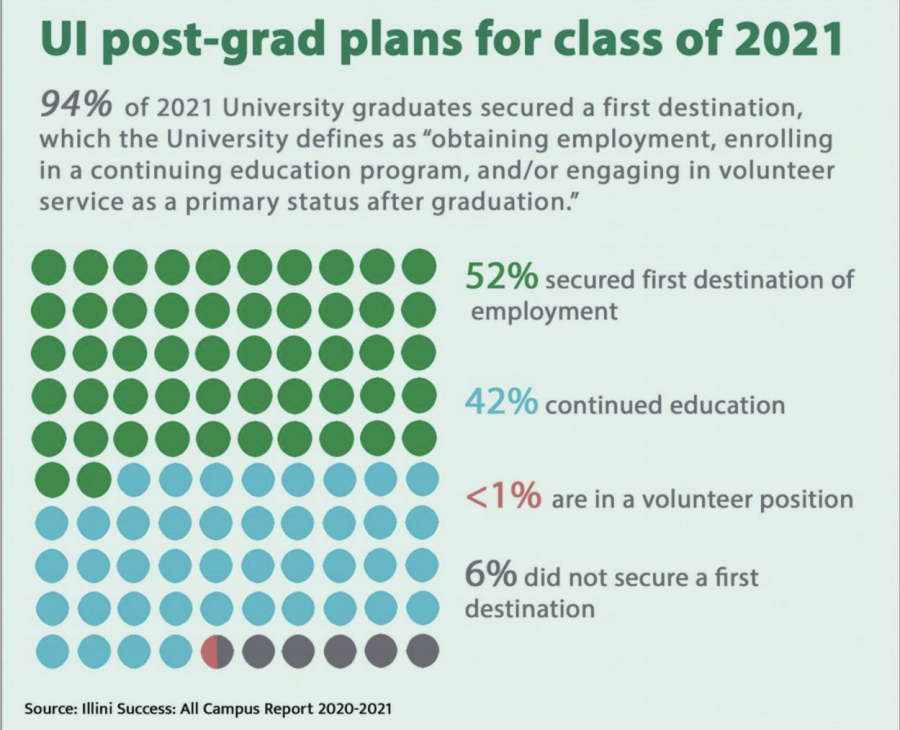UI struggles to gather employment statistics on graduating students
May 4, 2022
The University gathers career data about graduating students every year, including data related to employment, continuing education and volunteer work. The initiative is called Illini Success and they’ve conducted annual reports since 2014.
For 2021 University graduates, 52% secured their first choice of employment, and 42% secured their first choice for continuing education.
In total, 94% of the class of 2021 secured their first destination — an increase from the previous year, which saw 91% of graduates securing a first destination.
Additionally, each report includes the “knowledge rate of where graduates landed,” which was 57% for the academic year 2019 to 2020 and 2021 to 2022 — the years impacted by the pandemic.
The knowledge rate for the 2018 to 2019 school year was 75%, a large difference from pandemic years.
Get The Daily Illini in your inbox!
The College of Liberal Arts & Sciences is the largest college at the University, with 3,434 graduates last year. Of the 43% of LAS graduates that responded — one of the lowest rates across all colleges — 93% of them had secured a first destination.
The second largest college, the Grainger College of Engineering, had a response rate of 64%. For these graduates, 94% of them secured a first destination.
98% of respondents from the third-largest college, the Gies College of Business, secured a first destination. The college had the highest response rate at 85%.
According to Jennifer Neef, director of the Career Center who oversees Illini Success, the Illini Success team usually fielded the survey when graduating students picked up their caps and gowns in-person in previous years.
However, because the University switched to mailing students their graduation regalia due to the pandemic, the team had to adjust to being unable to reach graduating students in-person.
“We know that interaction either in-person, or an interaction from someone that the graduates know, has a positive impact on survey response rate,” Neef said. “And so this year, as we were going into the collection period, we really doubled down on partnering with the colleges and academic advisors in helping them by providing them with materials with messages to send to their students.”
As a result, Neef noted that this lack of in-person interaction with graduating students “has resulted in a decreased knowledge rate from our graduates.”
“We don’t know what we don’t know,” Neef said. “So we caution people from making assumptions about data that is unknown.”
Despite this, Neef said the overall outlook continues to be positive — graduates are landing in competitive industries or continuing their education.
“The story continues to be positive,” Neef said. “Our graduates are successfully landing in graduate school, professional school and employment.”
While Neef said she “wouldn’t necessarily call that a surprise,” she did find it reassuring, especially given challenges faced by students who graduated during the pandemic.
“It’s another reassurance of the talent we have at (the University), even through the most challenging circumstances,” Neef said.






